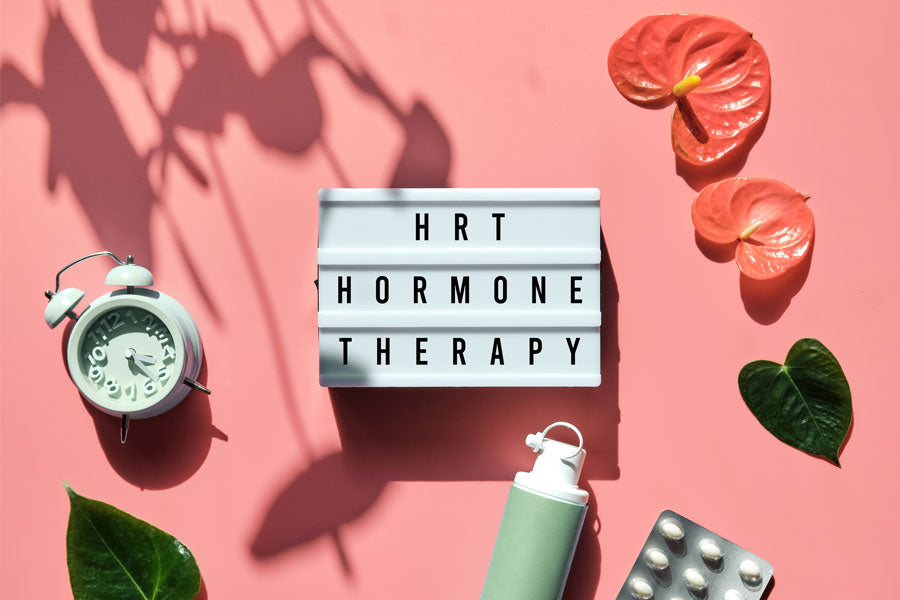Trusted for 25+ Years
What To Know About Breast Implants

Dr. Lisa Lawless, CEO of Holistic Wisdom
Clinical Psychotherapist: Relationship & Sexual Health Expert

Breasts & Body Image
Although there are quite a few myths about making your breasts larger, from special creams to exercise techniques, the truth is that there is no way to change the size of your breasts except through cosmetic surgery. You can opt to have the surgery or learn how to be comfortable with the size and shape of your breasts and understand that there are pros and cons to all different types of bodies. We've all gone through times when we didn't like parts of our bodies, and acceptance is a healthy part of our self-esteem no matter what we decide.

Breast Surgery: Implants & Lifts
A breast implant or lift is not necessarily a simple operation, but it's usually safe when performed by a qualified plastic surgeon. Nevertheless, as with any surgery, there is always a possibility of complications or a reaction to the anesthesia. Bleeding and infection following a breast lift are uncommon, but they can cause scars that can widen over time.
Mastopexy (the procedure for correcting the size, shape, and position of sagging breasts) does leave noticeable, permanent scars, although they'll be covered by your bra or bathing suit. The procedure can also leave you with unevenly positioned nipples or a permanent loss of feeling in your nipples or breasts. If you smoke or vape, it may be a good time to quit because smokers and vapers have shown to have poor healing and wider scars.
Common Reasons For Breast Surgery
- To enhance the body contour or increase or reduce size.
- To balance a difference in breast size.
- As a reconstructive technique following breast surgery.
- Following a mastectomy due to breast cancer.
 Breast Augmentation Requirements
Breast Augmentation Requirements
Breast augmentation can enhance your appearance and self-confidence. Still, it won't necessarily change your looks to match your ideal or cause other people to treat you differently before you decide to have surgery. Think carefully about your expectations and discuss them with your surgeon.
The best candidates for breast augmentation are those looking for improvement, not perfection, in their appearance. If you're physically healthy and realistic in your expectations, you may be a good candidate.
Types Of Breast Implants
A breast implant is a silicone shell filled with either silicone gel, composite, or a saltwater solution known as saline.
- Saline breast implants have an elastomer silicone outer shell filled with a sterile saline solution.
- Silicone breast implants also have a silicone outer shell filled with a viscous silicone gel. There have been, to date, eight generations of silicone breast implants with a focus on keeping them from leaking. The newer silicone implants have a slightly higher 96% fill than older 85% fill models with more cross-linking of the silicone molecules, making them more stiff breast implants. These are considered gummy bear implants because they break apart more like a gummy bear would rather than with a gel.
Breast Augmentation Risks
Capsular Contracture
Breast augmentation is relatively straightforward, assuming you have a good surgeon, which is key to this going well. But as with any operation, there are risks associated with surgery and specific complications associated with this procedure. The most common problem, capsular contracture, occurs if the scar or capsule around the implant begins to tighten. This squeezing of the soft implant can cause the breast to feel hard.
Capsular contracture can be treated in several ways and sometimes requires either removal or scoring of the scar tissue or perhaps removal or replacement of the implant. As with any surgical procedure, excessive bleeding following the operation may cause some swelling and pain. If excessive bleeding continues, another process may be needed to control the bleeding and remove the accumulated blood.
Infection
A small percentage of of people develop an infection around an implant. This may occur at any time but is most often seen within a week after surgery. In some cases, the implant may need to be removed for several months until the infection clears. A new implant can then be inserted.
Sensitivity Issues
Some people report that their nipples become oversensitive, undersensitive, or numb. You may also notice small patches of numbness near your incisions. These symptoms usually disappear within time but may be permanent in some patients.
Milk Production
There is no evidence that breast implants will affect fertility, pregnancy, or your ability to nurse. If, however, you have nursed a baby within the year before augmentation, you may produce milk for a few days after surgery. This may cause some discomfort but can be treated with medication prescribed by your doctor.
Ruptures
Occasionally, breast implants may break or leak. Rupture can occur due to an injury or even from standard compression and movement, causing the shell to leak. If a saline-filled implant breaks, the implant will deflate in a few hours, and the body will harmlessly absorb the saltwater. However, if a break occurs in a gel-filled implant, one of two things may happen. If the shell breaks but the scar capsule around the implant does not, you may not detect any change.
The silicone gel may move into the surrounding tissue if the scar breaks or tears, especially following extreme pressure. The gel may collect in the breast and cause a new scar to form around it or migrate to another body area. There may be a change in the shape or firmness of the breast. This is less likely with newer implants.
Both types of breaks may require a second operation and replacement of the leaking implant. In some cases, it may not be possible to remove all of the silicone gel in the breast tissue if a rupture should occur.
Some with breast implants have reported symptoms similar to diseases of the immune system, such as scleroderma and other arthritis-like conditions. These symptoms may include joint pain or swelling, fever, fatigue, or breast pain. Research has found no clear link between silicone breast implants and the symptoms of what doctors refer to as connective-tissue disorders, but the FDA has requested further study.
Possible Rare Cancer Risk
On September 08, 2022, the U.S. Food and Drug Administration issued a safety communication regarding a rare occurrence of squamous cell carcinoma (SCC) and various lymphomas that may develop in the scar tissue around breast implants. There is not enough information on whether or not breast implants cause these cancers or if some implants pose a higher risk than others.
Planning Breast Augmentation Surgery
In your initial consultation, your surgeon should evaluate your health and explain which surgical techniques are most appropriate for you based on the condition of your breasts and skin tone. If your breasts are sagging, your doctor may recommend a breast lift. Be sure to discuss your expectations frankly with your surgeon. They should be equally frank with you, describing your alternatives and the risks and limitations of each.
You may want to ask your surgeon for a copy of the manufacturer's insert that comes with the implant they will use so that you are fully informed about it. Also, tell your surgeon if you smoke and if you're taking any medications, vitamins, or other drugs.
Your surgeon should also explain the type of anesthesia to be used, the facility where the surgery will be performed, and the costs involved. Because most insurance companies do not consider breast augmentation medically necessary, carriers generally do not cover the cost of this procedure.
Having the Surgery
Inserting and positioning your implant will depend on your anatomy and your surgeon's recommendation. The incision can be made in the crease where the breast meets the chest, around the areola (the darker skin surrounding the nipple), or in the armpit. Working through the incision, the surgeon will lift your breast tissue and skin to create a pocket, either directly behind the breast tissue or underneath your chest wall muscle (the pectoral muscle). The implants are then centered beneath your nipples.
Some surgeons believe that putting the implants behind your chest muscle may reduce the potential for capsular contracture. Drainage tubes may be used for several days following the surgery. This placement may also interfere less with breast examination by mammogram than if the implant is placed directly behind the breast tissue.
However, placement behind the muscle may be more painful for a few days after surgery than placement directly under the breast tissue. You'll want to discuss the pros and cons of these alternatives with your doctor before surgery to fully understand the implications of the procedure they recommend for you. The surgery usually takes one to two hours to complete. Stitches are used to close the incisions, which may also be taped for more significant support. A gauze bandage may be applied over your breasts to help with healing.
Follow Up is Important
Regular examination by your plastic surgeon and routine mammograms for those in the appropriate age groups at prescribed intervals will help assure that any complications can be detected early and treated.
Finding a Reputable Surgeon
To find a plastic surgeon who performs this procedure, visit the online referral service of the ASPS (American Society of Plastic Surgeons). ASPS, founded in 1931, is the largest plastic surgery organization globally and the foremost authority on cosmetic and reconstructive plastic surgery. All ASPS physician members are certified by the ABPS (American Board of Plastic Surgery) or Canada's Royal College of Physicians and Surgeons.
Breast Implant Debate
Silicone-gel breast implants began selling in 1962 before the FDA required proof that all medical devices are safe and effective. Complaints that they broke and caused illnesses began in the late 1980s, and in 1992 the FDA banned gel implants except for patients with breast cancer or a few other conditions, who could get them by enrolling in strictly controlled research studies.
The implants largely have been exonerated of causing such serious or chronic illnesses as cancer or lupus. But breaks and resulting silicone leakage, painful scar tissue, autoimmune concerns and other local complications remain in question.
Health Concerns
Breast Cancer Detection
While there is no evidence that breast implants cause breast cancer, they may change how mammography is done to detect cancer. When you request a routine mammogram, go to a radiology center where technicians are experienced in the special techniques required to get a reliable breast x-ray with an implant. Additional views will be required.
Ultrasound examinations may benefit some with implants to detect breast lumps or evaluate the implant. While most do not experience these complications, you should discuss them with your physician to make sure you understand the risks and consequences of breast augmentation.
Breast Implant Health Concerns
Breast implants have not been found to cause or raise your chances of getting breast cancer. However, they have been linked to having a higher risk of getting anaplastic large-cell lymphoma (ALCL: non-Hodgkin's lymphoma).
Silicone is well known for being hypoallergenic; however, there may be some concerns concerning autoimmune responses in the body, such as silicone-reactive disorder. In 1992, the FDA banned silicone breast implants over possible health risks of autoimmune conditions and other health concerns, but they have long since been determined to be safe.
However, silicone breast implants have continued to be connected with autoimmune responses. They are referred to as Autoimmune inflammatory Syndrome Induced by Adjuvants (ASIA) or Breast Implant Illness (BII). These are not considered medical diagnoses, but hundreds of thousands of people have indicated they developed autoimmune issues once their silicone breast implants were put in and went away once removed.
A study conducted by the National Institutes of Health (NIH) regarding autoimmune issues and silicone breast implants found that silicones can induce a chronic inflammatory process. Another study by NIH demonstrated a higher likelihood of autoimmune/rheumatic disorders due to silicone implants.
In Closing
Breast implants are considered safe if updated every ten to twenty years, and the patient is healthy. Getting them is a personal decision and can make one's quality of life better when done well. No matter what you choose, ensure that you do what is right for you and your health and thoroughly communicate your needs and concerns with your surgeon.






